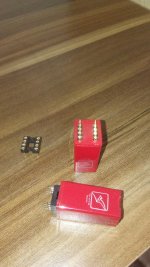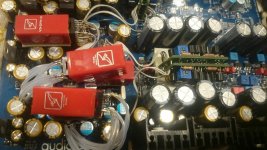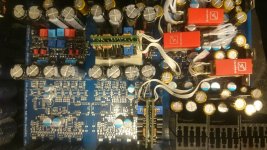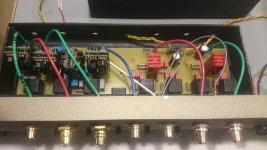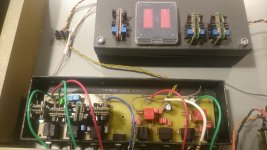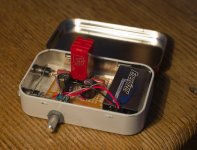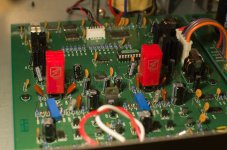Hey there. I recently received a set of Burson V6 "vivid" dual opamps for testing out from SSaudio, and am writing up my experience with them. Most of you might find it a bit strange seeing me outside of the Tubes/Valves forum 
This is the first post of several (an introduction, really) so that I can get the ball rolling on getting the review up.
First off, let me state that I was offered these samples for testing without charge, and that I am not being offered any compensation for my review, I simply agreed to post up my experience with them in return for being sent samples. I do not sell them, and am not profiting off of this review in any way.
Second, let me say that those of you who have seen my posts may know I do not mince words. If I think something is poor quality, poorly engineered, or downright stupid, I will state so, usually pretty clearly I wont be giving any headstart to these simply because they were free, or based on reputation or "perceived" quality. I will be as honest as possible.
I wont be giving any headstart to these simply because they were free, or based on reputation or "perceived" quality. I will be as honest as possible.
So, here we go...
I do not own very much solid state gear, and don't buy much pre-made gear. My intention in trying these out was to see how they perform in DIY projects specifically, as that's my focus in audio overall. I do not currently have any test equipment other than a DMM and my ears. I'm very much an "average" guy so far as this is concerned, and on a budget too. If anybody else wants to try these out and run some real tests on them, drop me a line- I'll gladly lend them out so that you can run THD+N measurements.
My first setup- as pedestrian as it sounds, is a Basic CMoy circuit used as a general purpose preamp. The only modification is the use of a TLE2426 rail splitter reference to an OPA134 active ground scheme. I usually run my favorite opamp here- the OPA2132P. It's quiet, clean, and sounds good, with a characteristic dark/mellow Burr-Brown "signature" that I happen to think sounds flatter than some more expensive opamps. I also have a pair of OPA627 on a browndog adapter I run on occasion, although it's a trivially simple circuit for such a fancy chip. It performs excellent in this preamp, but it doesn't really shine too much better than the OPA2132 in this application- maybe for use with very clean reference monitors, or very nice headphones. I also have a selection of other opamps on hand I will call out on occasion for comparison.
Second setup- Full-range speakers with tube power amplifier. Speakers are dual Faital-Pro 3FE25-16 in a .53X scaled Karlsonator speaker constructed with foamcore, from the now legendary thread in the Full range forum. Power amplifier is a DIY 6N1P/6CW5 push-pull setup. Regulated screen voltage, concertina splitter, and solid state rectification with mosfet ripple filters. Very quiet and clean amplifier, capable of ~22 watts or so before soft clipping occurs. This combination is on 12+ hours daily as our main sound system, and is very "transparent" with any changes upstream being quite noticeable. It is usually used with a Samsung Galaxy Tab 4 tablet as a source, directly connected.
Third setup- PCM1794 dual-mono DAC, on a "HIFIDIY) PCB. The PCB utilises dual-opamp footprints for the I/V conversion with datasheet values for the resistors and capacitors associated with them. This is the primary reason I wanted to test these opamps, as I don't like traditional opamps for I/V conversion all that much. Here they use the NE5534 or dual NE5532 on adapters, although I have also used a few others here as well, and will call them out as needed for comparison. This gets it's signal via a CM6331A USB board.
I also have a few other projects I will try them in, and will update the posting as I go.
Next up- I'll post my initial review/impressions of the Bursons themselves, and we will go from there.
This is the first post of several (an introduction, really) so that I can get the ball rolling on getting the review up.
First off, let me state that I was offered these samples for testing without charge, and that I am not being offered any compensation for my review, I simply agreed to post up my experience with them in return for being sent samples. I do not sell them, and am not profiting off of this review in any way.
Second, let me say that those of you who have seen my posts may know I do not mince words. If I think something is poor quality, poorly engineered, or downright stupid, I will state so, usually pretty clearly
So, here we go...
I do not own very much solid state gear, and don't buy much pre-made gear. My intention in trying these out was to see how they perform in DIY projects specifically, as that's my focus in audio overall. I do not currently have any test equipment other than a DMM and my ears. I'm very much an "average" guy so far as this is concerned, and on a budget too. If anybody else wants to try these out and run some real tests on them, drop me a line- I'll gladly lend them out so that you can run THD+N measurements.
My first setup- as pedestrian as it sounds, is a Basic CMoy circuit used as a general purpose preamp. The only modification is the use of a TLE2426 rail splitter reference to an OPA134 active ground scheme. I usually run my favorite opamp here- the OPA2132P. It's quiet, clean, and sounds good, with a characteristic dark/mellow Burr-Brown "signature" that I happen to think sounds flatter than some more expensive opamps. I also have a pair of OPA627 on a browndog adapter I run on occasion, although it's a trivially simple circuit for such a fancy chip. It performs excellent in this preamp, but it doesn't really shine too much better than the OPA2132 in this application- maybe for use with very clean reference monitors, or very nice headphones. I also have a selection of other opamps on hand I will call out on occasion for comparison.
Second setup- Full-range speakers with tube power amplifier. Speakers are dual Faital-Pro 3FE25-16 in a .53X scaled Karlsonator speaker constructed with foamcore, from the now legendary thread in the Full range forum. Power amplifier is a DIY 6N1P/6CW5 push-pull setup. Regulated screen voltage, concertina splitter, and solid state rectification with mosfet ripple filters. Very quiet and clean amplifier, capable of ~22 watts or so before soft clipping occurs. This combination is on 12+ hours daily as our main sound system, and is very "transparent" with any changes upstream being quite noticeable. It is usually used with a Samsung Galaxy Tab 4 tablet as a source, directly connected.
Third setup- PCM1794 dual-mono DAC, on a "HIFIDIY) PCB. The PCB utilises dual-opamp footprints for the I/V conversion with datasheet values for the resistors and capacitors associated with them. This is the primary reason I wanted to test these opamps, as I don't like traditional opamps for I/V conversion all that much. Here they use the NE5534 or dual NE5532 on adapters, although I have also used a few others here as well, and will call them out as needed for comparison. This gets it's signal via a CM6331A USB board.
I also have a few other projects I will try them in, and will update the posting as I go.
Next up- I'll post my initial review/impressions of the Bursons themselves, and we will go from there.
Last edited:
I have used monolithic and discrete opamps significantly in R&D over the last 5 years. The V6 Vivid are close to being the most transparent (only second to Sonic Imagery 992/994 discrete bipolar). The Sonic Imagery is very demanding on the power supply. The Burson are not quite as demanding, but they won't perform best unless they have a very localized power supply capacitance. See if you can put a 100uf Nichicon FG across the +/- rails right at the op amp location (bypassed with a .1uf MKP of course). Or even some 47uf on each power rail very close to the op amp.
Hi friends
IC3 and IC4 of deq2496 were used in output buffer
amplifier sony ta fe600r player ibasso dx90
I tested the deq2496 at flat settings when you plug it into the device, the AB class will sound like A class from A amplifier. A remarkable point,
The V6 Vivid Opamps have a very vivid voice. Neutral and detailed sound with a tight bass effect dynamic field perfectow and medium tones are very accurate and have exactly as needed. Bass is quite low and deep
The V6 Vivid has a clean and clear treble response.
Highly dynamic, impressive and detailed musical.
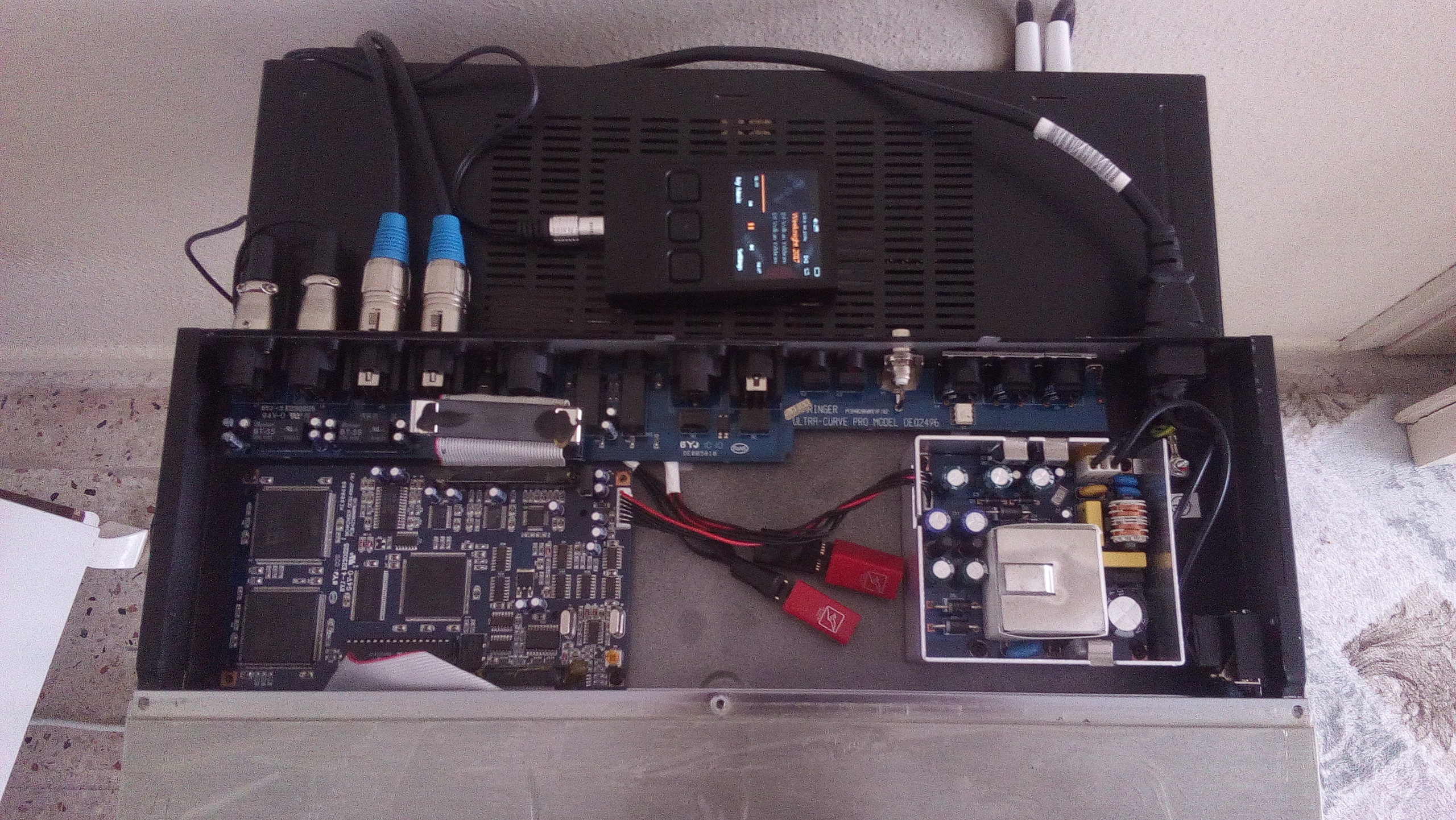
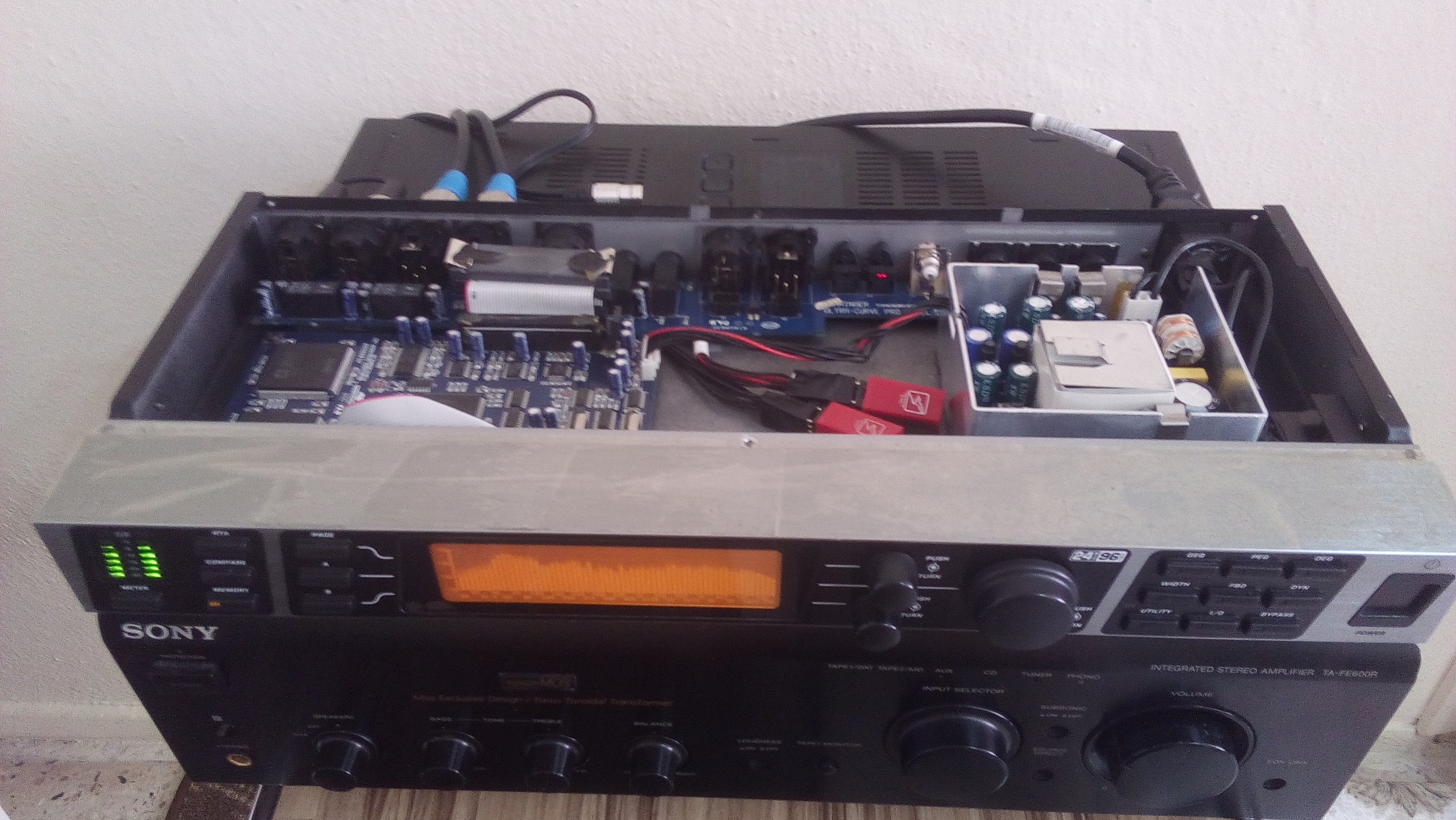
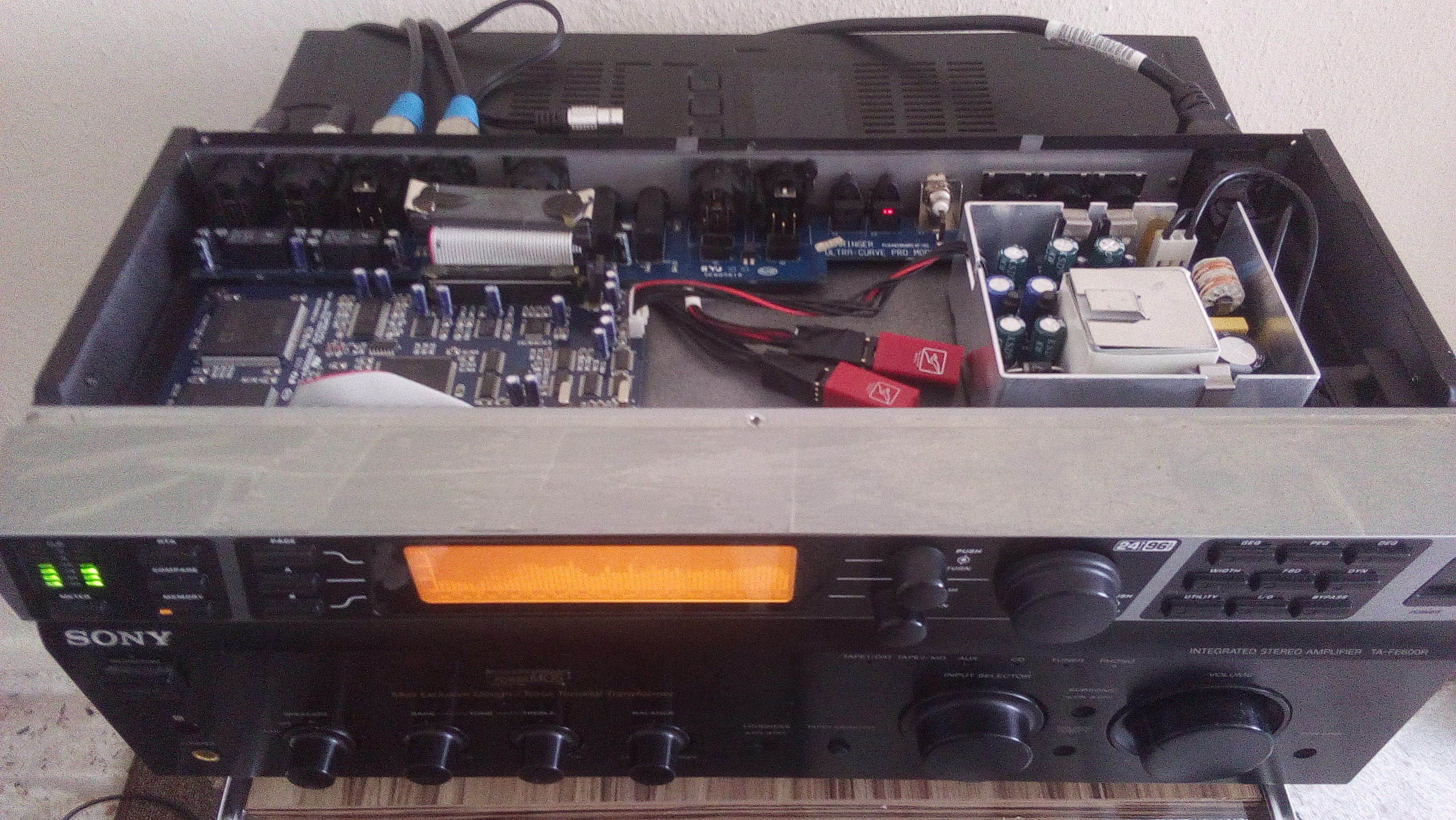

IC3 and IC4 of deq2496 were used in output buffer
amplifier sony ta fe600r player ibasso dx90
I tested the deq2496 at flat settings when you plug it into the device, the AB class will sound like A class from A amplifier. A remarkable point,
The V6 Vivid Opamps have a very vivid voice. Neutral and detailed sound with a tight bass effect dynamic field perfectow and medium tones are very accurate and have exactly as needed. Bass is quite low and deep
The V6 Vivid has a clean and clear treble response.
Highly dynamic, impressive and detailed musical.




Sorry for the long wait, severe lack of time and persistent hand tremors have kept me from spending much time with a soldering iron, and DIYaudio in general. I managed to almost complete a board that I plan to use these in, and of course now that I've gone to take pics the Cmoy amplifier I built for these is missing 
This is just some preliminary pics to show how they are shipped, and the size compared to other options.
They ship in a nice little snap-shut plastic case, with a dense, tight-fitting foam insert, very nice attention to detail honestly.
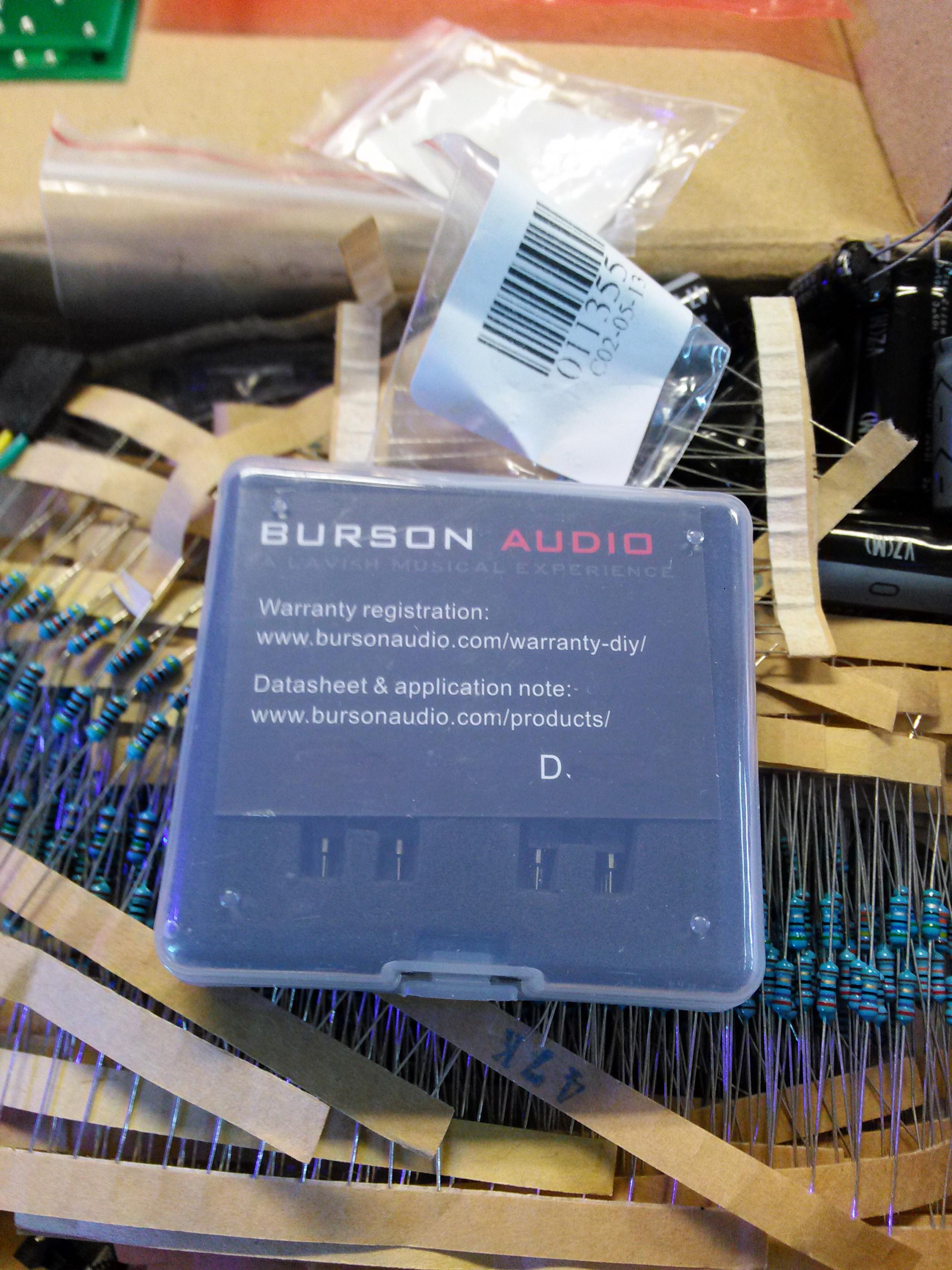
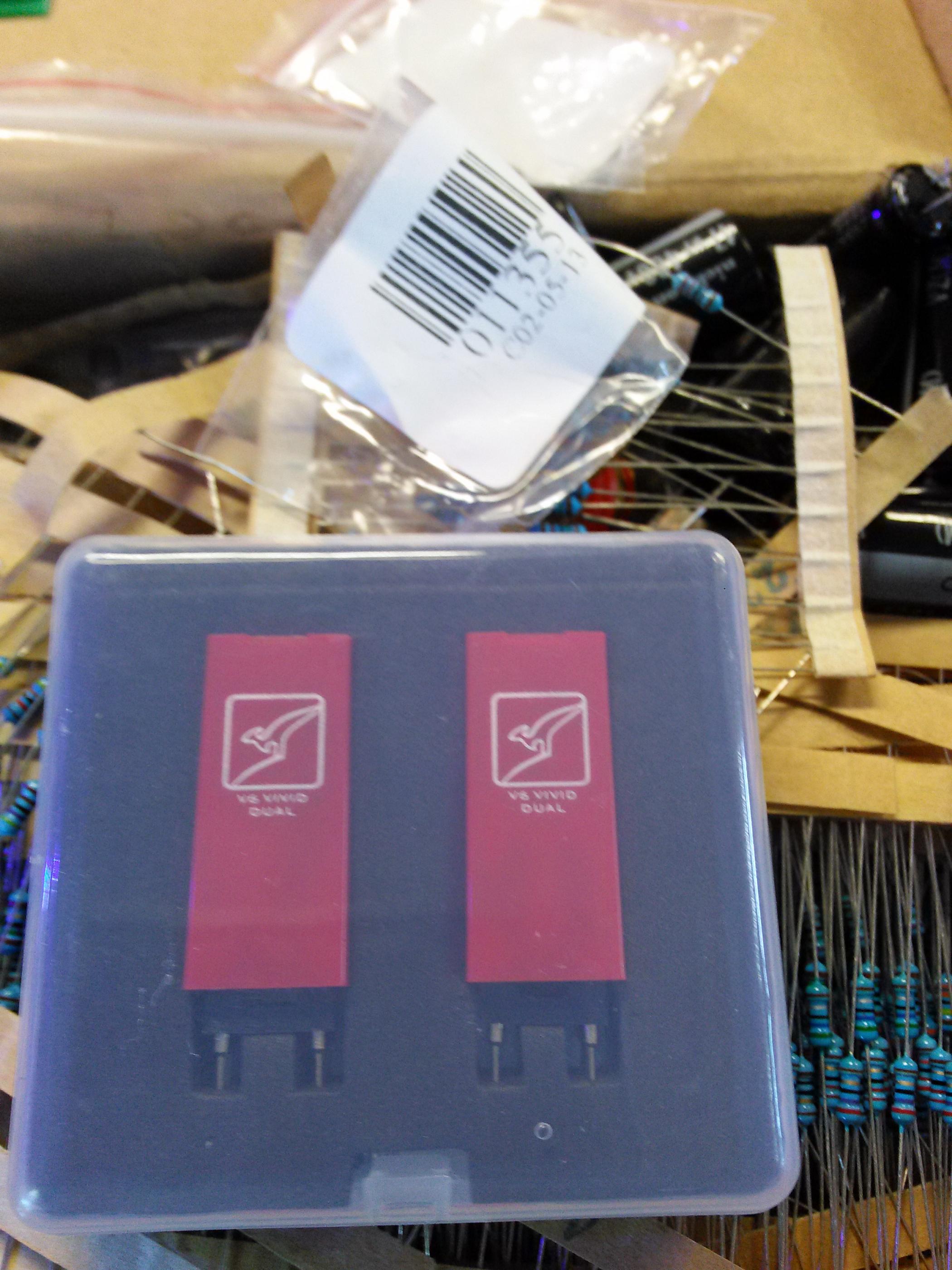
They come with a pair of gold-plated DIP8 sockets, which is a nice addition.
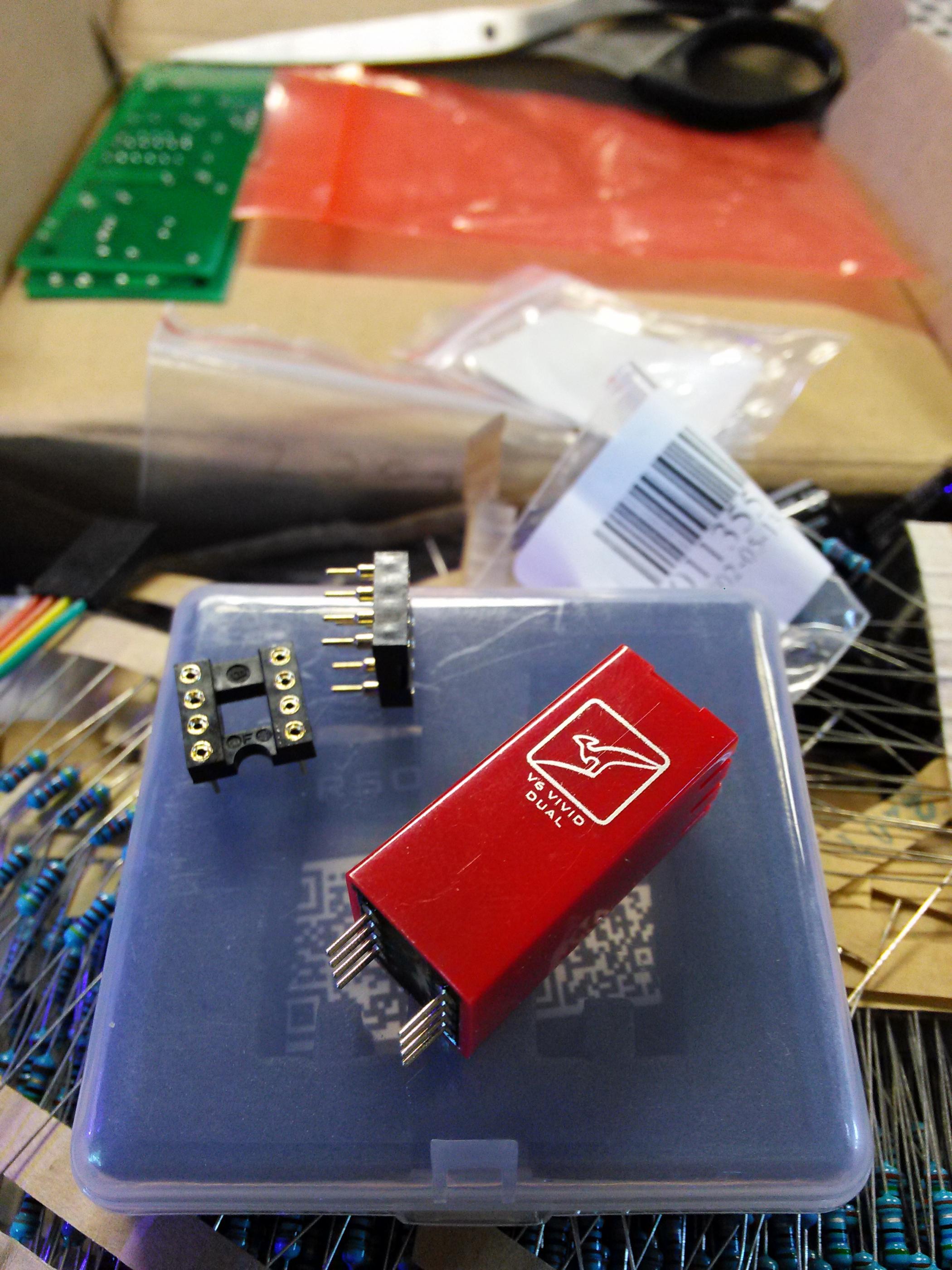
They also are potted in epoxy at the bottom, and feature nice machined pins-
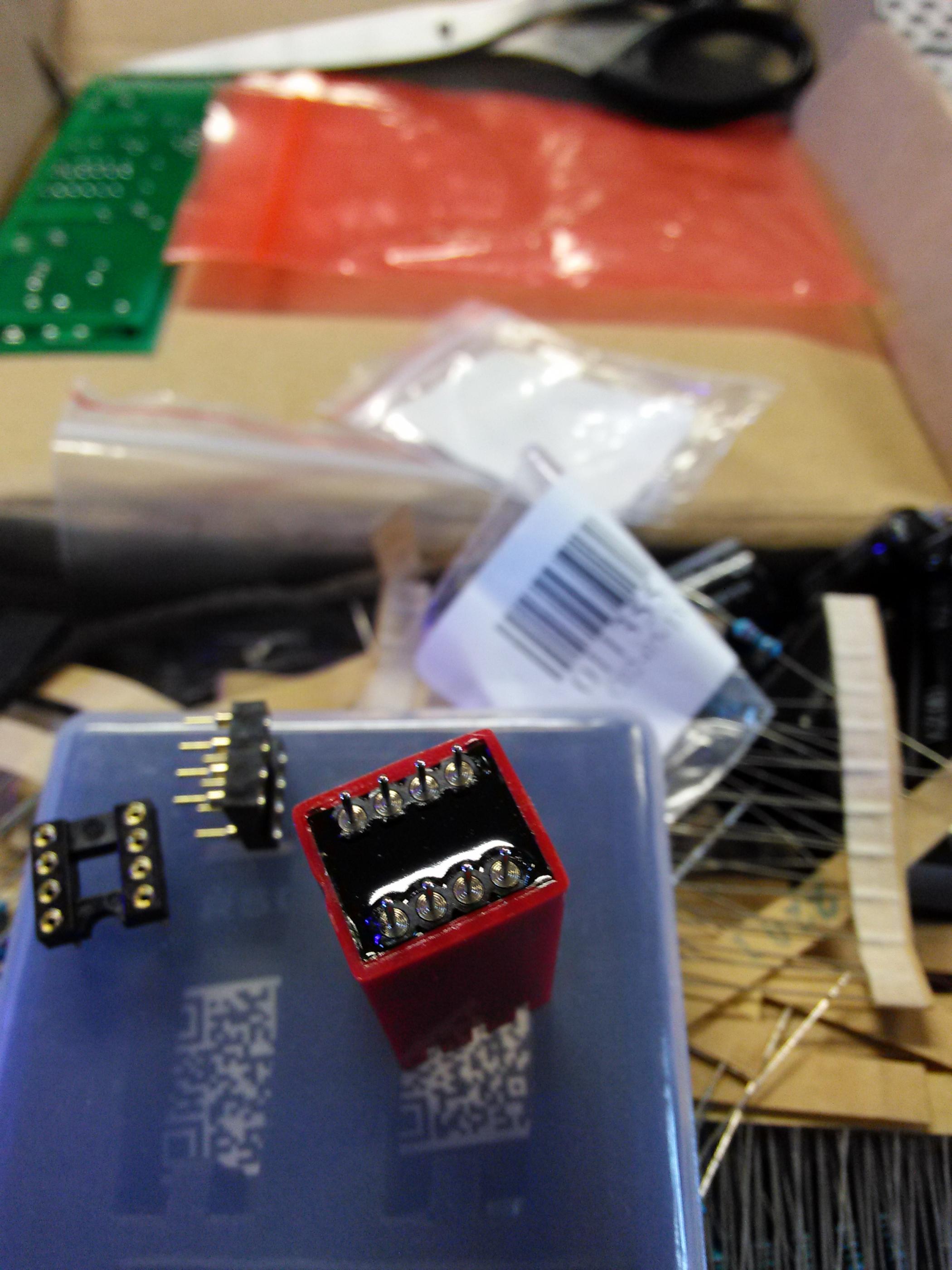
The case has ventilation slots at the end, and you can see two internal PCBs. With no openings on the bottom to draw air through I'm not sure how effective these will be, but they don't seem to run all that warm so I don't think thermal issues will be a concern.
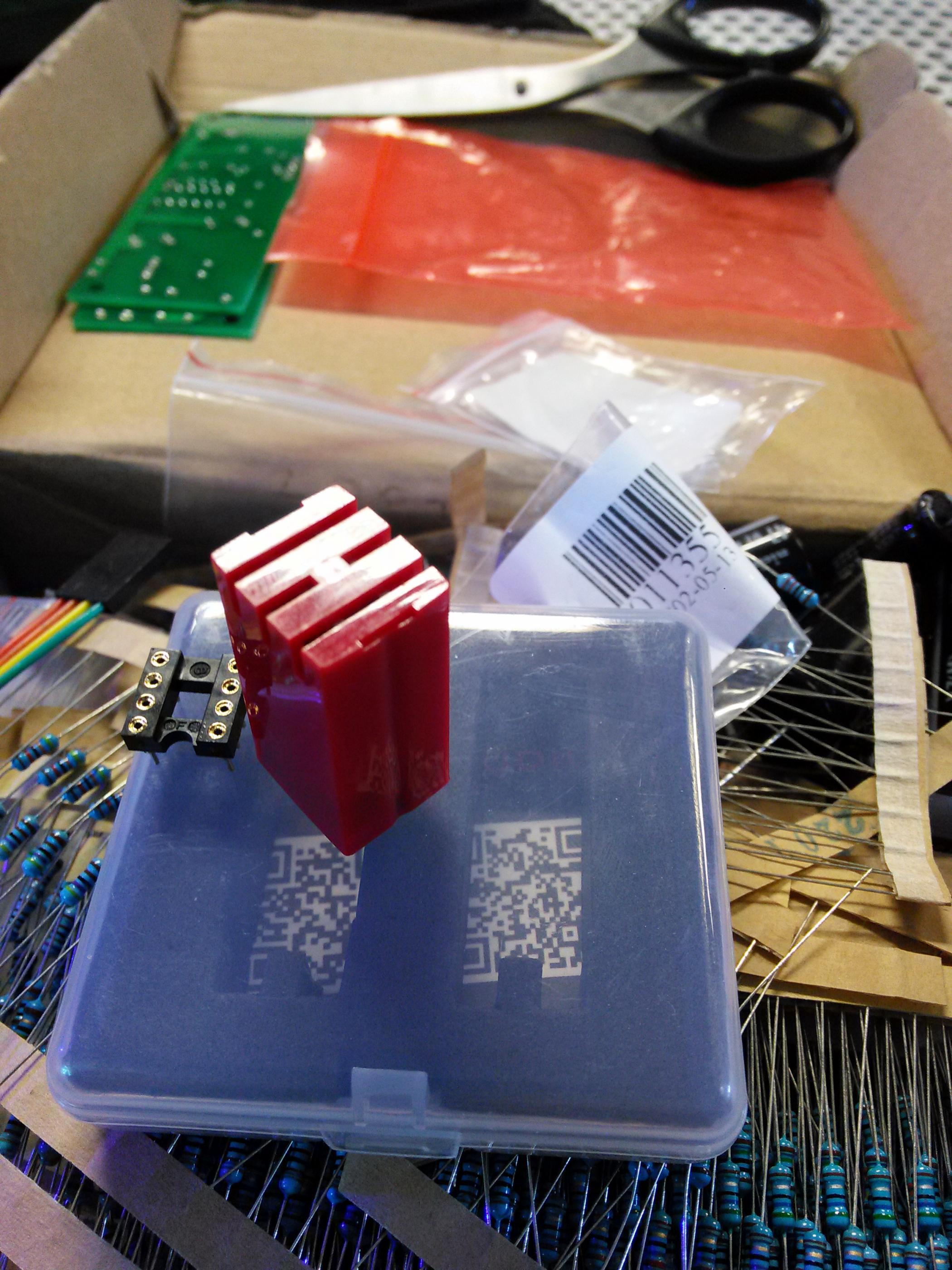
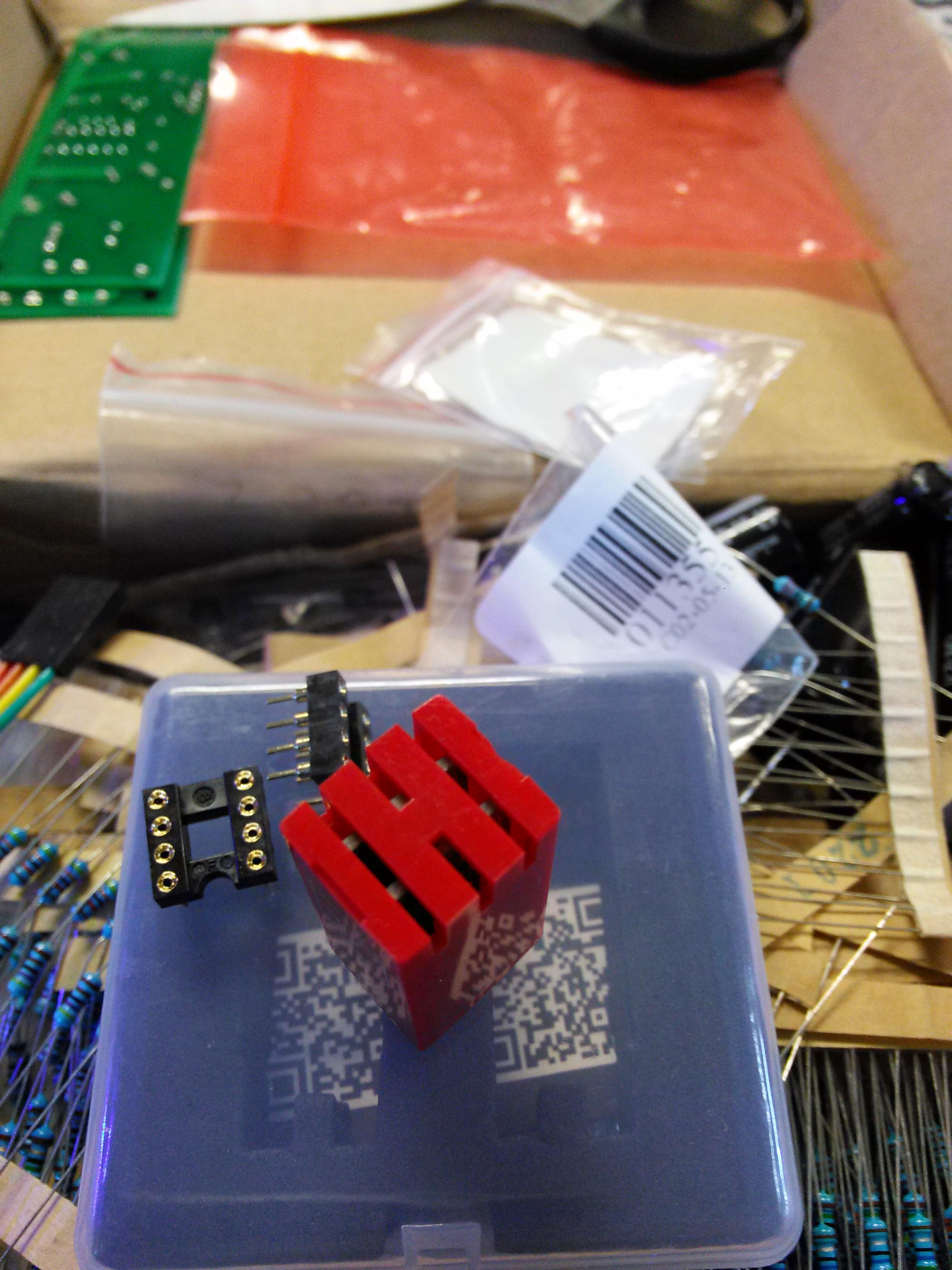
They do feature a prominent notch along the entire length of one side, corresponding to how they are located on most "standard" DIP8 opamps. It'll be hard to miss which side is which
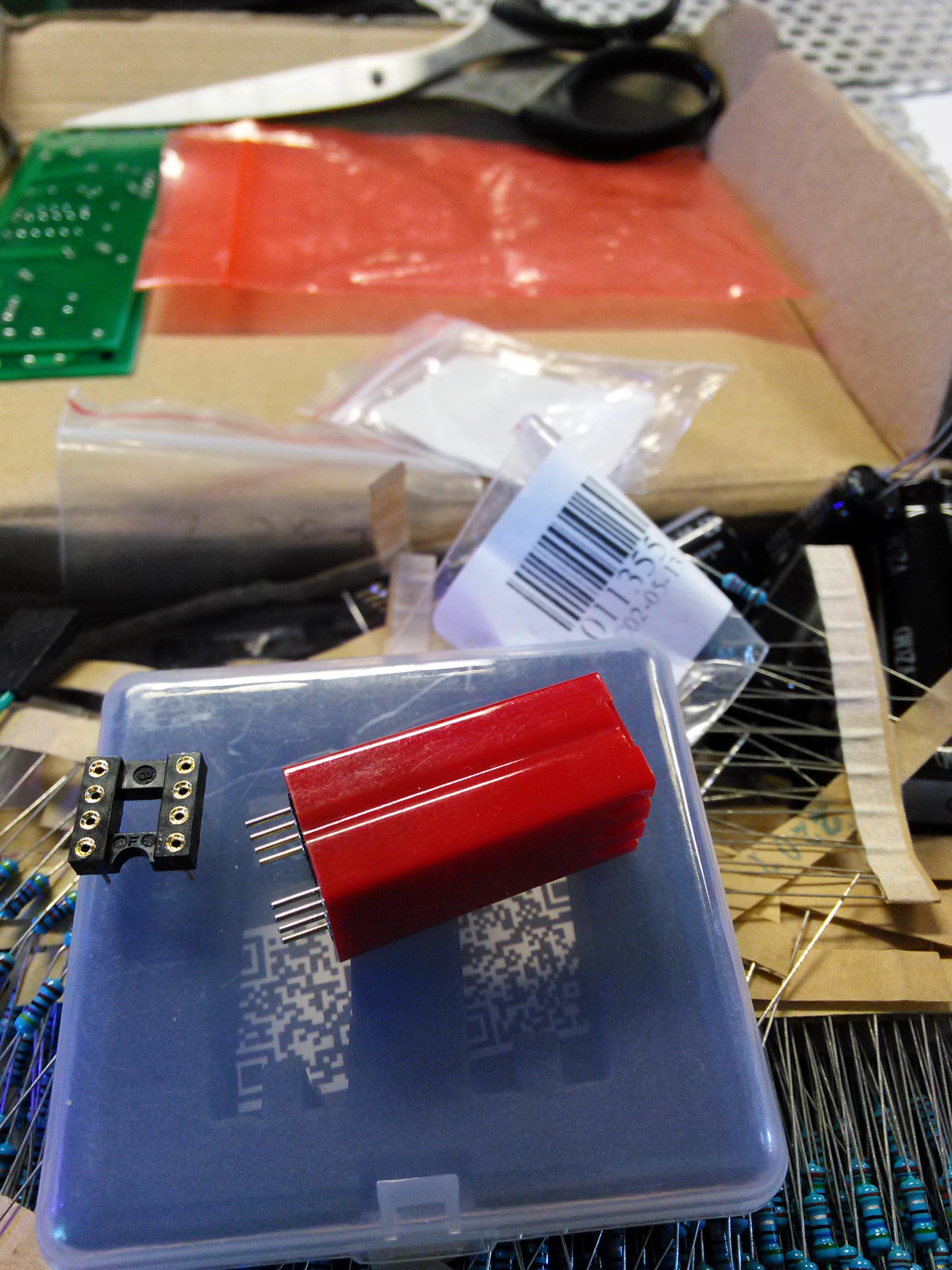
Here's a shot of them installed on the in-progress DAC I'm working on. Nice comparison between single opamps, dual singles on an adapter, and the Bursons. These guys are tall- twice as tall as the dual single adapter boards once installed.
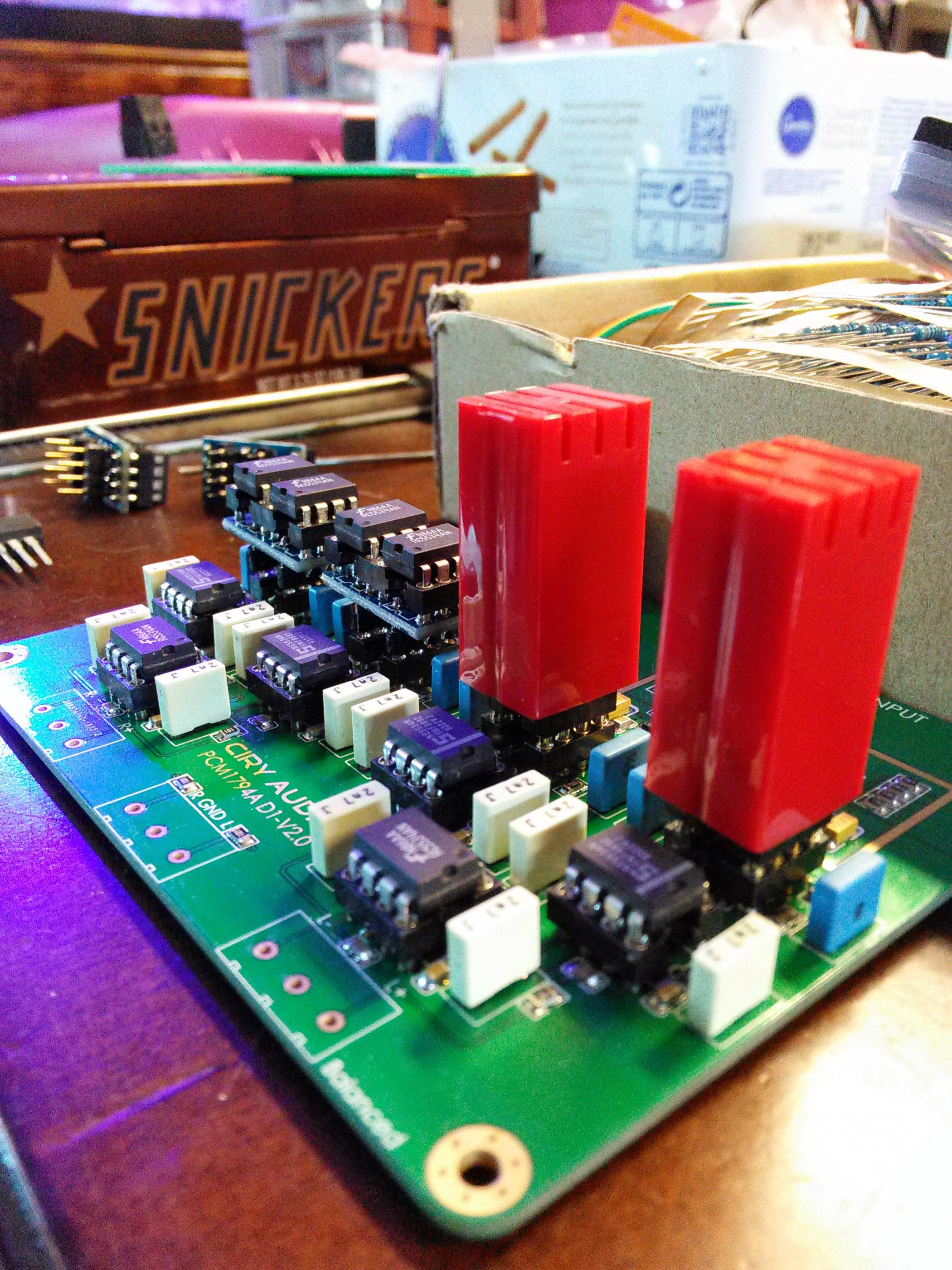
They are however quite narrow, which may work out well for installation into commercial gear where the chassis may be large, but board space is cramped-
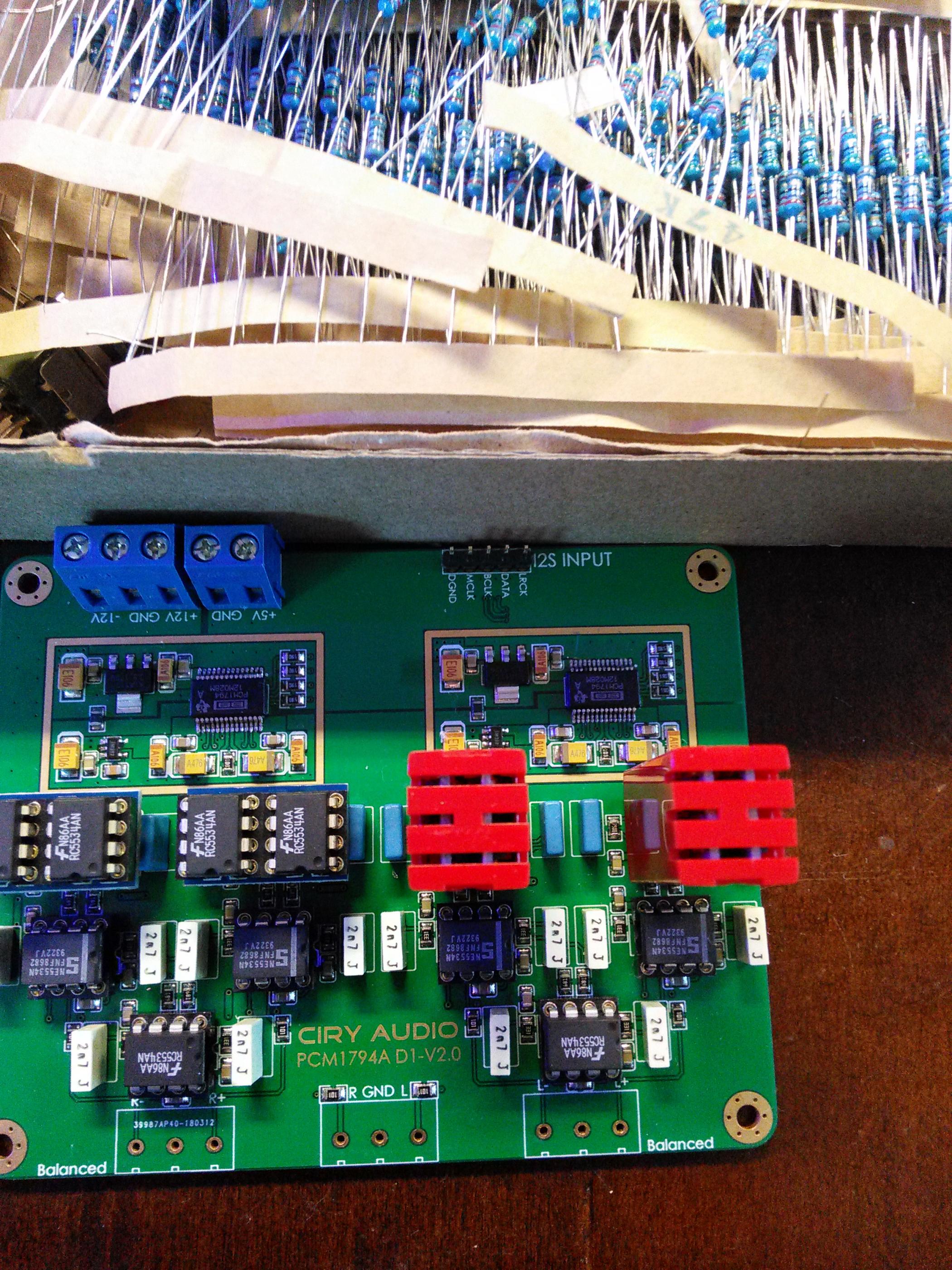
Initial listening impressions in the Cmoy were good, but the DAC isn't ready yet to comment there, of course. I'll dig for the Cmoy and get some pics soon. Initial listening impressions there are that you really want higher voltage for best sound, two nine-volt batteries in series worked well. Sound very, very close to the OPA627/637 opamps, but with their own signature that's hard to explain. Laid back, but detailed? I'm really bad at those sort of descriptions, but would love to put these on a THD analyser setup, and see what the frequency response is like.
I have a two (three in two weeks!) Year old pestering me to go for a ride, so that's it for now, I'll try to trickle in more soon. I have a bin of parts I'm looking for that contains the half finished PSU for the DAC that is hiding from me currently too, so I need to tear my parts stash apart and go diving
This is just some preliminary pics to show how they are shipped, and the size compared to other options.
They ship in a nice little snap-shut plastic case, with a dense, tight-fitting foam insert, very nice attention to detail honestly.
They come with a pair of gold-plated DIP8 sockets, which is a nice addition.
They also are potted in epoxy at the bottom, and feature nice machined pins-
The case has ventilation slots at the end, and you can see two internal PCBs. With no openings on the bottom to draw air through I'm not sure how effective these will be, but they don't seem to run all that warm so I don't think thermal issues will be a concern.
They do feature a prominent notch along the entire length of one side, corresponding to how they are located on most "standard" DIP8 opamps. It'll be hard to miss which side is which
Here's a shot of them installed on the in-progress DAC I'm working on. Nice comparison between single opamps, dual singles on an adapter, and the Bursons. These guys are tall- twice as tall as the dual single adapter boards once installed.
They are however quite narrow, which may work out well for installation into commercial gear where the chassis may be large, but board space is cramped-
Initial listening impressions in the Cmoy were good, but the DAC isn't ready yet to comment there, of course. I'll dig for the Cmoy and get some pics soon. Initial listening impressions there are that you really want higher voltage for best sound, two nine-volt batteries in series worked well. Sound very, very close to the OPA627/637 opamps, but with their own signature that's hard to explain. Laid back, but detailed? I'm really bad at those sort of descriptions, but would love to put these on a THD analyser setup, and see what the frequency response is like.
I have a two (three in two weeks!) Year old pestering me to go for a ride, so that's it for now, I'll try to trickle in more soon. I have a bin of parts I'm looking for that contains the half finished PSU for the DAC that is hiding from me currently too, so I need to tear my parts stash apart and go diving
Attachments
-
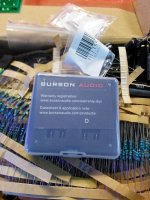 IMG_20190602_102202.jpg625.8 KB · Views: 2,314
IMG_20190602_102202.jpg625.8 KB · Views: 2,314 -
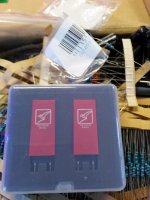 IMG_20190602_102207.jpg514.8 KB · Views: 2,208
IMG_20190602_102207.jpg514.8 KB · Views: 2,208 -
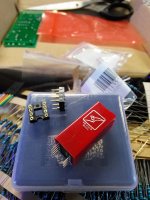 IMG_20190602_102234.jpg557.6 KB · Views: 2,243
IMG_20190602_102234.jpg557.6 KB · Views: 2,243 -
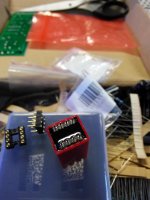 IMG_20190602_102242.jpg441.5 KB · Views: 2,183
IMG_20190602_102242.jpg441.5 KB · Views: 2,183 -
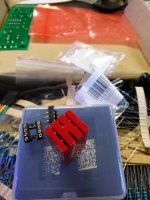 IMG_20190602_102252.jpg534.5 KB · Views: 2,160
IMG_20190602_102252.jpg534.5 KB · Views: 2,160 -
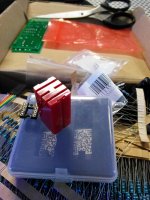 IMG_20190602_102300.jpg596.1 KB · Views: 2,121
IMG_20190602_102300.jpg596.1 KB · Views: 2,121 -
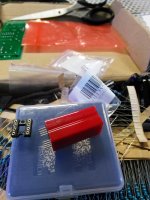 IMG_20190602_102307.jpg559.1 KB · Views: 2,135
IMG_20190602_102307.jpg559.1 KB · Views: 2,135 -
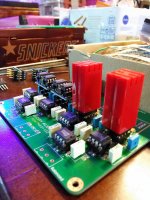 IMG_20190602_102720.jpg870.9 KB · Views: 2,221
IMG_20190602_102720.jpg870.9 KB · Views: 2,221 -
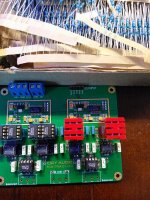 IMG_20190602_102709.jpg935.8 KB · Views: 2,135
IMG_20190602_102709.jpg935.8 KB · Views: 2,135
Sorry for the long wait, severe lack of time and persistent hand tremors have kept me from spending much time with a soldering iron, and DIYaudio in general. I managed to almost complete a board that I plan to use these in, and of course now that I've gone to take pics the Cmoy amplifier I built for these is missing
This is just some preliminary pics to show how they are shipped, and the size compared to other options.
They ship in a nice little snap-shut plastic case, with a dense, tight-fitting foam insert, very nice attention to detail honestly.


They come with a pair of gold-plated DIP8 sockets, which is a nice addition.

They also are potted in epoxy at the bottom, and feature nice machined pins-

The case has ventilation slots at the end, and you can see two internal PCBs. With no openings on the bottom to draw air through I'm not sure how effective these will be, but they don't seem to run all that warm so I don't think thermal issues will be a concern.


They do feature a prominent notch along the entire length of one side, corresponding to how they are located on most "standard" DIP8 opamps. It'll be hard to miss which side is which

Here's a shot of them installed on the in-progress DAC I'm working on. Nice comparison between single opamps, dual singles on an adapter, and the Bursons. These guys are tall- twice as tall as the dual single adapter boards once installed.

They are however quite narrow, which may work out well for installation into commercial gear where the chassis may be large, but board space is cramped-

Initial listening impressions in the Cmoy were good, but the DAC isn't ready yet to comment there, of course. I'll dig for the Cmoy and get some pics soon. Initial listening impressions there are that you really want higher voltage for best sound, two nine-volt batteries in series worked well. Sound very, very close to the OPA627/637 opamps, but with their own signature that's hard to explain. Laid back, but detailed? I'm really bad at those sort of descriptions, but would love to put these on a THD analyser setup, and see what the frequency response is like.
I have a two (three in two weeks!) Year old pestering me to go for a ride, so that's it for now, I'll try to trickle in more soon. I have a bin of parts I'm looking for that contains the half finished PSU for the DAC that is hiding from me currently too, so I need to tear my parts stash apart and go diving
My burson v6 vivid dual dip8
Attachments
Burson V6 Vivid
Before I start writing a review of my listening impressions of V6 Vivid I would like to thank Charles and Burson Audio for their generosity to supply me with the last generation of V6 op amps.
The package arrived in excellent condition with a delay, I suppose due to the Easter holidays or slower postal procedures but without any problems at customs.
Speaking frankly as an old Burson fan who has over 15 op amps (as you can see from the attach.) starting from the older ones like V3 generation, through V4 and V5 I was expecting that V6 should be on step further in sound improvement.
My main Hi-Fi rig consists of Audio lab M-DAC, diy tube preamp with 5687 tube, Primare A32 Dual Mono Amplifier and Pioneer/TAD S1 EX loudspeakers which I consider as a very analytical system. Also I have another active system with P.Audio concentric mid/high loudspeaker and Beyma 15” bass. And of course DIY active x/o fully moded with three generations of Burson op amps ! Music that I listen is mostly classical and orchestral jazz.
So I decided last month firstly to change op amps in my DAC and as I know my sound quite well was expecting to hear difference immediately.
Originally DAC was equipped with NE5532 and NE5534 op amps which I changed them two months after the purchase with Burson V5 generation. So I took V5 out in the I/V position and installed V6.
The sound...hmmm...The first impressions of the jury consisting of two old and experienced audiophiles, one professional musician – prof. of clarinet and myself is the holographic 3D stage, huge as a trunk of a Cadillac. It is the difference that is obvious at once after the first 2 seconds.
Also I know from my earlier experience in capacitor testing that Mundorf Mcap Supreme Silver/Oil caps can produce an excellent three dimensional illusion and I put them in place of my FT-3 coupling caps at the output of the
tube preamp. And that was the situation I have never experienced before. Simply stunning! A very good combination regarding 3D stage. But something was missing and the sound after a longer period of listening became fatiguing with metallic and sort of aggressive ingredient among many others virtues. Yes...the dynamic was better comparing with previous V5 or NE5532, sound had more details with controlled bass.Sincerely speaking I am afraid I was listening to highs with a lot of sibilance which shortly after became annoying.
But I remember I read somewhere that Bursons need 100 working hours for burning in to show their real nature. Was that recommendation coming from their technical team or not can’t remember really. And I spend the last 15-20 days listening to a local FM jazz radio at very low level.
Last week the jury gathered again and we played our favorite music. The change of the sound was obvious although I admit I was not firm believer in burning in of opamps. For loudspeakers - yes that is rule but for the rest of the electronics...hmmmm....I don’t know...simply can’t explain....
Now I am positive! Vocals especially females lost their aggressiveness, acoustic and amplified instruments sounded more natural and the bad recordings show their bad sides. The overall sound was with a lot of details and with balanced smoother character. Everything was enjoyable and non fatiguing.
Next couple days I continued listening to different musical material and mostly was impressed with the female vocals coming through Vivids. Perfect harmonic rich structure. The voice of Natalie Dessay was like never before – clear and rich.
After a week I moved and changed complete system with active x/o and PA drivers.
Put all Vivids alternatively in high pass, band pass and low pass sections and listened carefully. There was always significant change in the sound overall mostly noticed in the midrange and in this system it was consisted in details. I suppose it was due to the higher sensitivity of the drivers. A lot more information, more tiny details than previous BB2604, V3 and V5 had reproduced. Bass was also punchy, deep and veeeeery fast ! Highs were very extended, clear but with a pinch of aggressiveness (these are by the way PA drivers…!) which I suppose is welcomed for those listening heavy metal or rock music.
So are these V6 Vivids worth the money?
First it is all dependable of the quality of the complete Hi-Fi system what and how much will you hear the difference. My system is highly transparent and can show every change in the chain. Or if you put it in another way less expensive and lower quality electronics and loudspeakers might not show such a big difference. So be careful!
Anyway Burson Vivid V6 are excellent op amps and I highly recommend them.
Regards,
Yugovitz
Before I start writing a review of my listening impressions of V6 Vivid I would like to thank Charles and Burson Audio for their generosity to supply me with the last generation of V6 op amps.
The package arrived in excellent condition with a delay, I suppose due to the Easter holidays or slower postal procedures but without any problems at customs.
Speaking frankly as an old Burson fan who has over 15 op amps (as you can see from the attach.) starting from the older ones like V3 generation, through V4 and V5 I was expecting that V6 should be on step further in sound improvement.
My main Hi-Fi rig consists of Audio lab M-DAC, diy tube preamp with 5687 tube, Primare A32 Dual Mono Amplifier and Pioneer/TAD S1 EX loudspeakers which I consider as a very analytical system. Also I have another active system with P.Audio concentric mid/high loudspeaker and Beyma 15” bass. And of course DIY active x/o fully moded with three generations of Burson op amps ! Music that I listen is mostly classical and orchestral jazz.
So I decided last month firstly to change op amps in my DAC and as I know my sound quite well was expecting to hear difference immediately.
Originally DAC was equipped with NE5532 and NE5534 op amps which I changed them two months after the purchase with Burson V5 generation. So I took V5 out in the I/V position and installed V6.
The sound...hmmm...The first impressions of the jury consisting of two old and experienced audiophiles, one professional musician – prof. of clarinet and myself is the holographic 3D stage, huge as a trunk of a Cadillac. It is the difference that is obvious at once after the first 2 seconds.
Also I know from my earlier experience in capacitor testing that Mundorf Mcap Supreme Silver/Oil caps can produce an excellent three dimensional illusion and I put them in place of my FT-3 coupling caps at the output of the
tube preamp. And that was the situation I have never experienced before. Simply stunning! A very good combination regarding 3D stage. But something was missing and the sound after a longer period of listening became fatiguing with metallic and sort of aggressive ingredient among many others virtues. Yes...the dynamic was better comparing with previous V5 or NE5532, sound had more details with controlled bass.Sincerely speaking I am afraid I was listening to highs with a lot of sibilance which shortly after became annoying.
But I remember I read somewhere that Bursons need 100 working hours for burning in to show their real nature. Was that recommendation coming from their technical team or not can’t remember really. And I spend the last 15-20 days listening to a local FM jazz radio at very low level.
Last week the jury gathered again and we played our favorite music. The change of the sound was obvious although I admit I was not firm believer in burning in of opamps. For loudspeakers - yes that is rule but for the rest of the electronics...hmmmm....I don’t know...simply can’t explain....
Now I am positive! Vocals especially females lost their aggressiveness, acoustic and amplified instruments sounded more natural and the bad recordings show their bad sides. The overall sound was with a lot of details and with balanced smoother character. Everything was enjoyable and non fatiguing.
Next couple days I continued listening to different musical material and mostly was impressed with the female vocals coming through Vivids. Perfect harmonic rich structure. The voice of Natalie Dessay was like never before – clear and rich.
After a week I moved and changed complete system with active x/o and PA drivers.
Put all Vivids alternatively in high pass, band pass and low pass sections and listened carefully. There was always significant change in the sound overall mostly noticed in the midrange and in this system it was consisted in details. I suppose it was due to the higher sensitivity of the drivers. A lot more information, more tiny details than previous BB2604, V3 and V5 had reproduced. Bass was also punchy, deep and veeeeery fast ! Highs were very extended, clear but with a pinch of aggressiveness (these are by the way PA drivers…!) which I suppose is welcomed for those listening heavy metal or rock music.
So are these V6 Vivids worth the money?
First it is all dependable of the quality of the complete Hi-Fi system what and how much will you hear the difference. My system is highly transparent and can show every change in the chain. Or if you put it in another way less expensive and lower quality electronics and loudspeakers might not show such a big difference. So be careful!
Anyway Burson Vivid V6 are excellent op amps and I highly recommend them.
Regards,
Yugovitz
Attachments
Hi guys,
We are almost ready to ship the free Burson Audio opamps the first week of July!. Please PM me and let me know your project. You can also upgrade the old ones.
Supreme Sound Opamp V5i – Burson Audio
Supreme Sound Opamp V6 – Burson Audio
Happy listening!
We are almost ready to ship the free Burson Audio opamps the first week of July!. Please PM me and let me know your project. You can also upgrade the old ones.
Supreme Sound Opamp V5i – Burson Audio
Supreme Sound Opamp V6 – Burson Audio
Happy listening!
Hello all. I'm fairly new here and haven't done much posting because I'm still getting a feel for the place. I did approach a member who represents Burson Audio, as they were posting about "sample" op amps. They agreed to provide me with the necessary op amps for my upgrade, in return for a review. I am NOT a professional.
I recently purchased a Xiang Sheng DAC-05B from Amazon, figuring it would either provide an improvement to my system, or be sent back. Without getting too into politics or business practices, I figure if Amazon's presence makes it much harder to audition gear, then I'll try before I buy based on their generous return policy.
I suppose I'd better list off the rest of the system to give context.
A Samsung Galaxy TAB A connected, via powered USB hub, to a 1TB portable HDD, running PowerAmp (paid) for Android.
Aforementioned Xiang Sheng DAC-05B, upgraded with Burson V6 Vivid dual opamps, a Western Electric 396A tube, and Mundorf Supreme aluminum output caps.
DIY "Study" Kondo KLS-M77 with Mundorf Supreme SGO caps and Gold Lion 12AX7's.
Monoprice 31 band EQ with dedicated subwoofer out and crossover.
A Yaqin MC13-S, upgraded with an ALPS RK27 50A potentiometer, Miflex KPCU coupling caps, and Gold Lion reissue 12AX7's, 12AU7's, and KT77's.
Crown XLS1000 crossed over at 236hz
QSC ISA280 running bridged
DIY floorstanding speakers with:
1x HiVi RT2C
1x Dayton PS220-8
2x Goldwood GW-8PC-8
Skar Audio EVL18-D2 wired for 4 ohms in a Skar Audio vented box.
Yaqin runs the T/M. Crown runs the woofers. QSC runs the sub.
I contacted the representative through these forums. I received 3 V6 Vivid dual op amps in the mail about 2 weeks later. They were in a plastic clamshell case, inside a padded envelope. There was a scannable warranty slip included. Being the big kid I am I immediately rushed down to my listening room to install them.
Over the course of a week I probably put about 35-40 hours on the V6's. I did immediately notice a greater presence and dynamic to the sound of the DAC-05B. BUT... I honestly can't tell you, objectively, if this was a "better" sound, or just a louder one. It could very well be that the Bursons just have more gain than the stock op amps. I want to say there was more of...well, of everything. And that is why I can't completely discard the idea that it's just louder.
I also run a spectrum analyzer, hooked to a calibrated Dayton iMM6 mic, in the same listening room. I have yet to find the time to do FR sweeps to discover whether there is really any measured difference. I apologize if that's a disappointment to a science based crowd, but I'm recently married and renovating our first house. It's unfortunately not a priority to spend a full day measuring op amps.
What I WANT to say is that the Bursons brought out a greater clarity than the stock op amps, and to my subjective ears, that is true. I found myself going for the EQ to pull the highs, and the lows, just a bit back from their previous positions, because the Bursons seemed to make them more "there". Not in a grating way, but just enough so that I noticed. I can say, subjectively, that they are a welcome and very good sounding addition, to my particular DAC's circuit.
Imgur: The magic of the Internet
Imgur: The magic of the Internet
I recently purchased a Xiang Sheng DAC-05B from Amazon, figuring it would either provide an improvement to my system, or be sent back. Without getting too into politics or business practices, I figure if Amazon's presence makes it much harder to audition gear, then I'll try before I buy based on their generous return policy.
I suppose I'd better list off the rest of the system to give context.
A Samsung Galaxy TAB A connected, via powered USB hub, to a 1TB portable HDD, running PowerAmp (paid) for Android.
Aforementioned Xiang Sheng DAC-05B, upgraded with Burson V6 Vivid dual opamps, a Western Electric 396A tube, and Mundorf Supreme aluminum output caps.
DIY "Study" Kondo KLS-M77 with Mundorf Supreme SGO caps and Gold Lion 12AX7's.
Monoprice 31 band EQ with dedicated subwoofer out and crossover.
A Yaqin MC13-S, upgraded with an ALPS RK27 50A potentiometer, Miflex KPCU coupling caps, and Gold Lion reissue 12AX7's, 12AU7's, and KT77's.
Crown XLS1000 crossed over at 236hz
QSC ISA280 running bridged
DIY floorstanding speakers with:
1x HiVi RT2C
1x Dayton PS220-8
2x Goldwood GW-8PC-8
Skar Audio EVL18-D2 wired for 4 ohms in a Skar Audio vented box.
Yaqin runs the T/M. Crown runs the woofers. QSC runs the sub.
I contacted the representative through these forums. I received 3 V6 Vivid dual op amps in the mail about 2 weeks later. They were in a plastic clamshell case, inside a padded envelope. There was a scannable warranty slip included. Being the big kid I am I immediately rushed down to my listening room to install them.
Over the course of a week I probably put about 35-40 hours on the V6's. I did immediately notice a greater presence and dynamic to the sound of the DAC-05B. BUT... I honestly can't tell you, objectively, if this was a "better" sound, or just a louder one. It could very well be that the Bursons just have more gain than the stock op amps. I want to say there was more of...well, of everything. And that is why I can't completely discard the idea that it's just louder.
I also run a spectrum analyzer, hooked to a calibrated Dayton iMM6 mic, in the same listening room. I have yet to find the time to do FR sweeps to discover whether there is really any measured difference. I apologize if that's a disappointment to a science based crowd, but I'm recently married and renovating our first house. It's unfortunately not a priority to spend a full day measuring op amps.
What I WANT to say is that the Bursons brought out a greater clarity than the stock op amps, and to my subjective ears, that is true. I found myself going for the EQ to pull the highs, and the lows, just a bit back from their previous positions, because the Bursons seemed to make them more "there". Not in a grating way, but just enough so that I noticed. I can say, subjectively, that they are a welcome and very good sounding addition, to my particular DAC's circuit.
Imgur: The magic of the Internet
Imgur: The magic of the Internet
The whole point of playback equipment and the components that they comprise is trasparency. "Good sound" comes fromt he recording and ironically the microsonics/THD imparted onto the signals while they are still in discrete form, PRE-mixdown.]
IMO the whole fasination with ludicrously expensive opamps discrete or not is more or less a fruitless endevour as far as 'sound quality' is concerned. As long as the THD+SN spec is better than any of those from 80s then your good to go. The ultimate arbiter of intimate / clear sound is the way the recording is handled - something outwith control of any listener / hobbyist.
If you want exotic opamps for the sake of experimentation or showing off by all means do that, but just remember the principle purpose of a sound system is sound and aesthetic / show-off factor secondary.
IMO the whole fasination with ludicrously expensive opamps discrete or not is more or less a fruitless endevour as far as 'sound quality' is concerned. As long as the THD+SN spec is better than any of those from 80s then your good to go. The ultimate arbiter of intimate / clear sound is the way the recording is handled - something outwith control of any listener / hobbyist.
If you want exotic opamps for the sake of experimentation or showing off by all means do that, but just remember the principle purpose of a sound system is sound and aesthetic / show-off factor secondary.
It could very well be that the Bursons just have more gain than the stock op amps. I want to say there was more of...well, of everything. And that is why I can't completely discard the idea that it's just louder.
Yes, you can. There is a physical impossibility that a different opamp will produce different gain in the same circuit.
Still, it is trivial to measure gain as you only need a cheap voltmeter.
FR sweeps with a microphone will produce a null result if conducted properly.
Last edited:
Burson V6 Vivid
Like other folks in this thread, I responded to an ad from Burson calling for people to review their latest generation opamps. I was selected to test a pair of their dual V6 Vivid opamps in some of my DIY projects, and was sent them free of charge (provided I posted a writeup such as this one). In both of my test cases I made back to back comparisons with the excellent OPA2132, which I have been using for many years.
Chu Moy
I built this Chu Moy headphone amp on half of a RadioShack (remember them?) vector board. It uses the schematic from Tangentsoft, but it uses a single 9V battery supply instead of the recommended 18V.
In doing some listening I found the Burson had more detail, was smoother and less harsh. Cymbals in particular sounded more natural. I noticed new details in familiar recordings, for instance I was able to tell for the first time that on a particular track guitar strings were being plucked by hand rather than with a pick. When I was doing something else in addition to listening (browsing this forum or playing a phone game) I found the music harder to ignore while the Burson was in the circuit.
The 2132 exhibited some noise (hissing) which differed between channels which may indicate the voltage was too low for the 2132. The Burson had much lower noise in this application.
Musical Fidelity A324
This DAC shipped from the factory with NE5532s in its I/V converter role, and not long after I bought it (second hand), I removed them from the circuit board, and replaced them with DIP-8 sockets in order that I should be able to do tests like this one. At the same time I removed the output DC coupling caps as well as a resistor and replaced them with a short and a potentiometer respectively, in order to null DC on the output. This mod was the idea of GeorgeHiFi and they describe it here: musical-fidelity-a3.24 mods.
OPA2132s have sat in those sockets since I conducted my first tests several years ago. I plugged the DAC into a SOHA-II hybrid headphone amplifier and AKG K-701 headphones into that.
When I plugged in the Burson, I noticed changes similar to those I saw in the Chu Moy: less sibilance/reduced harshness, with better instrument separation. I noticed new details, for instance, what I previously thought was an instrument was someone singing. It did something which I find a bit hard to explain, in that it made dynamic/volume changes seem more pronounced (does it have more gain?), which made things seem more dramatic. Overall it was somehow simultaneously smoother yet more detailed.
In both the Chu Moy and the Musical Fidelity A324, it seems like the Burson V6 Vivid is a straight sonic upgrade over the OPA2132, which is something I rarely encounter.
Like other folks in this thread, I responded to an ad from Burson calling for people to review their latest generation opamps. I was selected to test a pair of their dual V6 Vivid opamps in some of my DIY projects, and was sent them free of charge (provided I posted a writeup such as this one). In both of my test cases I made back to back comparisons with the excellent OPA2132, which I have been using for many years.
Chu Moy
I built this Chu Moy headphone amp on half of a RadioShack (remember them?) vector board. It uses the schematic from Tangentsoft, but it uses a single 9V battery supply instead of the recommended 18V.
In doing some listening I found the Burson had more detail, was smoother and less harsh. Cymbals in particular sounded more natural. I noticed new details in familiar recordings, for instance I was able to tell for the first time that on a particular track guitar strings were being plucked by hand rather than with a pick. When I was doing something else in addition to listening (browsing this forum or playing a phone game) I found the music harder to ignore while the Burson was in the circuit.
The 2132 exhibited some noise (hissing) which differed between channels which may indicate the voltage was too low for the 2132. The Burson had much lower noise in this application.
Musical Fidelity A324
This DAC shipped from the factory with NE5532s in its I/V converter role, and not long after I bought it (second hand), I removed them from the circuit board, and replaced them with DIP-8 sockets in order that I should be able to do tests like this one. At the same time I removed the output DC coupling caps as well as a resistor and replaced them with a short and a potentiometer respectively, in order to null DC on the output. This mod was the idea of GeorgeHiFi and they describe it here: musical-fidelity-a3.24 mods.
OPA2132s have sat in those sockets since I conducted my first tests several years ago. I plugged the DAC into a SOHA-II hybrid headphone amplifier and AKG K-701 headphones into that.
When I plugged in the Burson, I noticed changes similar to those I saw in the Chu Moy: less sibilance/reduced harshness, with better instrument separation. I noticed new details, for instance, what I previously thought was an instrument was someone singing. It did something which I find a bit hard to explain, in that it made dynamic/volume changes seem more pronounced (does it have more gain?), which made things seem more dramatic. Overall it was somehow simultaneously smoother yet more detailed.
In both the Chu Moy and the Musical Fidelity A324, it seems like the Burson V6 Vivid is a straight sonic upgrade over the OPA2132, which is something I rarely encounter.
Attachments
Burson Playmate OPA upgrade
To the replacemant of the I/V OPA1612, the Burson V6 vivid dual operation amplifiers arrived. Thanks for Burson & Carlos!
Here we can see the new opa-s on my photos.
OPA1612 V6 vivid
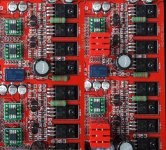
The Moode audio player 6.3.0 was my music playback (as usual) for the Raspberry Pi 3B+ single board computer.
I was surprised by the quality of the Audiophile Lounge internet radio (320 kbps mp3) playing similarly to a live quality flac music source as OPA1612 was replaced by the Burson V6 Vivid.
The Burson V6 sounded superior to the 1612 and it clearly heard at the first listening section.
My very first impression was that I am listening to an amazingly lifelike music.
After a hundred hours long continuous usage, the well-known music became more detailed and nice, when new textures appeared.
I noticed the very nice atmosphere of the recording stage as well.
Gregorio Paniagua: As the music plays on, the instruments were not could be heard as spot-like, but more defined and well-spreading. Every note from the chords could be correlated to the strikes of the strings. The shaw-teeth were counted by one by one while the power saw worked. The fluting had a nice airy sigh.
Natalie Dessay’s singing and the rich textured voice of the instruments from the baroque era are sounded like a live concert experience.
Yello:When I heard just the bass section only, it made a fully detailed, very soft and rhythmic impression.
I was fascinated by listening to Hong Kong High-End Audio Visual Show album because of the well dimensioned, huge stage effect and clear tune.
Interestingly, the tracks of albums compressed with less bitrate (like 128-256 kbps mp3) are enjoyable, and well reproduced.
Music:
Natalie Dessay – Baroque (FLAC)
Natalie Dessay – Bach/Magnificat, Handel/Dixit Dominus (APE)
Atrium Musicae de Madrid, Gregorio Paniagua - 2003 - La Folia de la Spagna (FLAC)
Yello – Flag (FLAC)
Hong Kong High-End Audio Visual Show - The Perfect Sound (2015) (FLAC)
Thank you for the opportunity!
Regards, Dee
To the replacemant of the I/V OPA1612, the Burson V6 vivid dual operation amplifiers arrived. Thanks for Burson & Carlos!
Here we can see the new opa-s on my photos.
OPA1612 V6 vivid

The Moode audio player 6.3.0 was my music playback (as usual) for the Raspberry Pi 3B+ single board computer.
I was surprised by the quality of the Audiophile Lounge internet radio (320 kbps mp3) playing similarly to a live quality flac music source as OPA1612 was replaced by the Burson V6 Vivid.
The Burson V6 sounded superior to the 1612 and it clearly heard at the first listening section.
My very first impression was that I am listening to an amazingly lifelike music.
After a hundred hours long continuous usage, the well-known music became more detailed and nice, when new textures appeared.
I noticed the very nice atmosphere of the recording stage as well.
Gregorio Paniagua: As the music plays on, the instruments were not could be heard as spot-like, but more defined and well-spreading. Every note from the chords could be correlated to the strikes of the strings. The shaw-teeth were counted by one by one while the power saw worked. The fluting had a nice airy sigh.
Natalie Dessay’s singing and the rich textured voice of the instruments from the baroque era are sounded like a live concert experience.
Yello:When I heard just the bass section only, it made a fully detailed, very soft and rhythmic impression.
I was fascinated by listening to Hong Kong High-End Audio Visual Show album because of the well dimensioned, huge stage effect and clear tune.
Interestingly, the tracks of albums compressed with less bitrate (like 128-256 kbps mp3) are enjoyable, and well reproduced.
Music:
Natalie Dessay – Baroque (FLAC)
Natalie Dessay – Bach/Magnificat, Handel/Dixit Dominus (APE)
Atrium Musicae de Madrid, Gregorio Paniagua - 2003 - La Folia de la Spagna (FLAC)
Yello – Flag (FLAC)
Hong Kong High-End Audio Visual Show - The Perfect Sound (2015) (FLAC)
Thank you for the opportunity!
Regards, Dee
Last edited:
Hi Deenoo, thanks for suggesting the OPA1612, I will try it out in my WHAMMY headphone amp.
I actually just finished benchmarking V6 vivid against other Op Amps. It's the best performer of the lot for me. see:
[Subjective Benchmark Part 1] Op Amps comparison in voltage gain stage
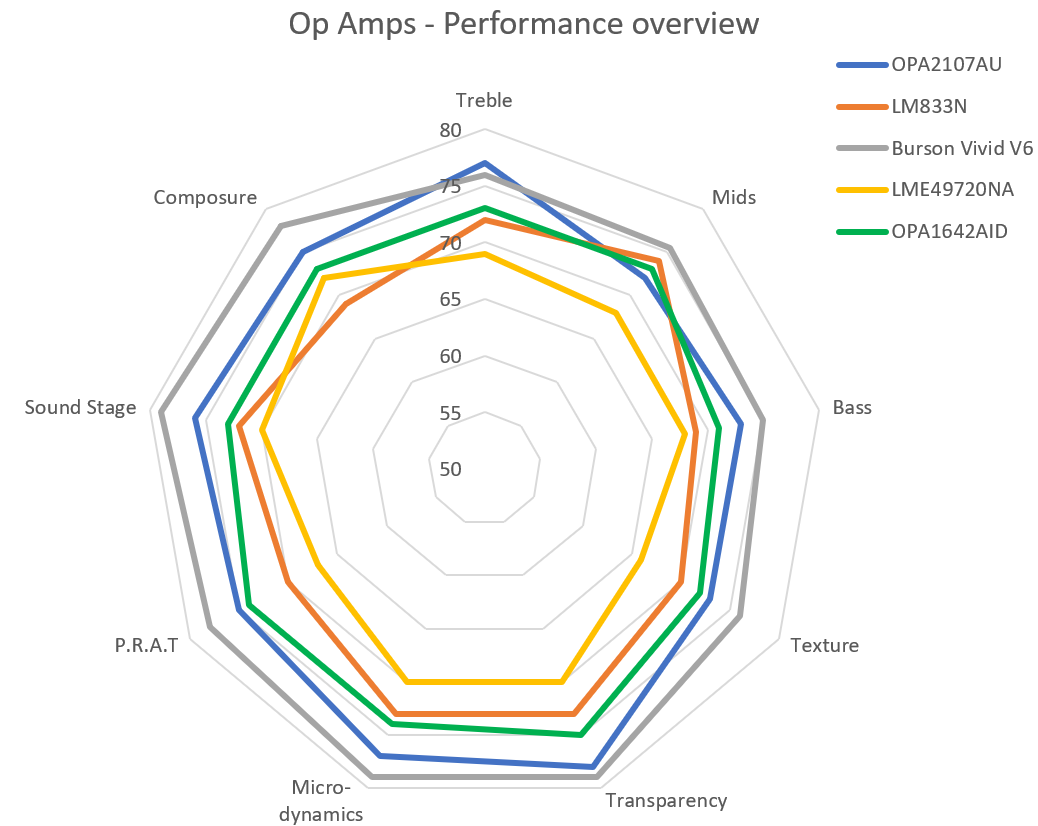

I think the "lifelike" comments I often see from the V6 are due to its consistent amount of micro dynamics across spectrum, giving a natural presentation, yet very defined.
Now even if V6 is a great step up, I'll keep looking for better sound
I actually just finished benchmarking V6 vivid against other Op Amps. It's the best performer of the lot for me. see:
[Subjective Benchmark Part 1] Op Amps comparison in voltage gain stage
I think the "lifelike" comments I often see from the V6 are due to its consistent amount of micro dynamics across spectrum, giving a natural presentation, yet very defined.
Now even if V6 is a great step up, I'll keep looking for better sound
OPA1612 (or better yet, a pair of OPA1611 on a dual-to-single DIP8 adapter) is an extremely clean and transparent op amp. Excellent for a gain stage or buffer stage in audio, and can drive more current than other monolithic op amps. However, it isn't the best for an I/V stage because it's just too clean/fast/transparent. I'm not surprised that the Burson V6 Vivid improved the I/V stage sound.
Since my last post (last year), I have done a lot more testing. I have found that I/V stage performs best with FET op amps. The DAC generates straight-line DC pulses, so this I/V stage is critical to properly shape the waveforms. If they are not shaped properly, then it's almost impossible to get it back. What you need is a FET based op amp with a slow enough slew rate to capture/shape the waveforms to translate as much of the DC energy into AC waveforms. It also needs a fast enough slew rate to give you the high frequency resolution. The OPA2132 is a great compromise here and works well in I/V stage. Actually, there are many manufacturers in this industry that use the OPA2132 in this stage because it gives the best performance in the 20V/us slew rate area and is available in a 2-channel SOIC format.
While the OPA2132 (or OPA132) performs well here, I have found a pair of OPA827 op amps on a dual-to-single DIP8 adapter actually work much better for I/V. It is a higher slew rate of about 28V/us, but it sounds better than OPA2132. It gives a lot more oomph and a lot more overall resolution. Interestingly, it gives a more powerful bass even though the slew rate is higher. I have used Burson V6 Vivid in I/V stage and they are okay, but I found that it was still over accentuating the high frequencies and the bass wasn't that strong. The 42V/us average slew rate of the Burson is just too fast. It slews too fast in reponse to the DC pulses from the DAC and then spends the rest of the pulse timeslice at DC (i.e. it slews up and then sits still). The result is a progressive EQ tilt towards higher frequencies with a loss of bass/midbass energy.
While the OPA827 works great for I/V, I have found that it's not as great for any following stages (filter, buffer, gain). It's a nice sound, but it actually sounds dirty with a bit of distortion. Other op amps are better for these stages.
After the I/V stage, you can start playing around with different op amps for stuff like low-pass filter and buffer/gain stages. The Burson V6 can give you excellent results here, but so can the OPA1612/1611. The OPA1612 is an extremely clean/transparent sound. The Burson can be used when you want a more warm and organic and full influence. It becomes a tuning exercise here. Every system/component is different and system synergy is a funny thing.
Since my last post (last year), I have done a lot more testing. I have found that I/V stage performs best with FET op amps. The DAC generates straight-line DC pulses, so this I/V stage is critical to properly shape the waveforms. If they are not shaped properly, then it's almost impossible to get it back. What you need is a FET based op amp with a slow enough slew rate to capture/shape the waveforms to translate as much of the DC energy into AC waveforms. It also needs a fast enough slew rate to give you the high frequency resolution. The OPA2132 is a great compromise here and works well in I/V stage. Actually, there are many manufacturers in this industry that use the OPA2132 in this stage because it gives the best performance in the 20V/us slew rate area and is available in a 2-channel SOIC format.
While the OPA2132 (or OPA132) performs well here, I have found a pair of OPA827 op amps on a dual-to-single DIP8 adapter actually work much better for I/V. It is a higher slew rate of about 28V/us, but it sounds better than OPA2132. It gives a lot more oomph and a lot more overall resolution. Interestingly, it gives a more powerful bass even though the slew rate is higher. I have used Burson V6 Vivid in I/V stage and they are okay, but I found that it was still over accentuating the high frequencies and the bass wasn't that strong. The 42V/us average slew rate of the Burson is just too fast. It slews too fast in reponse to the DC pulses from the DAC and then spends the rest of the pulse timeslice at DC (i.e. it slews up and then sits still). The result is a progressive EQ tilt towards higher frequencies with a loss of bass/midbass energy.
While the OPA827 works great for I/V, I have found that it's not as great for any following stages (filter, buffer, gain). It's a nice sound, but it actually sounds dirty with a bit of distortion. Other op amps are better for these stages.
After the I/V stage, you can start playing around with different op amps for stuff like low-pass filter and buffer/gain stages. The Burson V6 can give you excellent results here, but so can the OPA1612/1611. The OPA1612 is an extremely clean/transparent sound. The Burson can be used when you want a more warm and organic and full influence. It becomes a tuning exercise here. Every system/component is different and system synergy is a funny thing.
Last edited:
- Home
- Design & Build
- Parts
- My experience with the Burson V6 "Vivid" opamps
